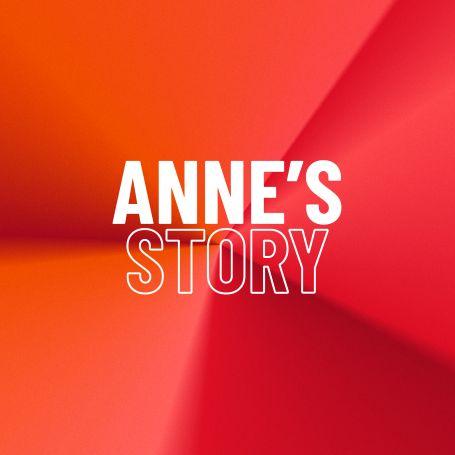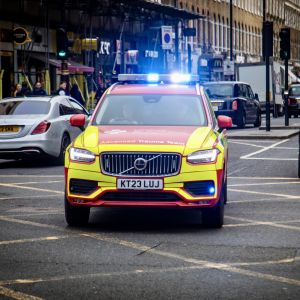22 Jul 2025

For Anne, 4 July 2018 started as a normal day. She went for coffee with her son and sister and walked her dog. She did the food shopping and caught up with a friend. But on her walk back home, something abnormal occurred.
“It was a warm day, so I was quite hot,” said Anne. “I had a bad headache, but I suffered with those often, so that didn’t seem unusual.
“All of a sudden, having walked across the estate where we live, I found myself on the floor. I collapsed in the stairway to our flats and fell unconscious.”
Out of nowhere, Anne had suffered a bleed in the brain (also known as intracranial hemorrhage), which is a type of stroke. This is life-threatening and requires immediate medical attention.
Luckily, Anne’s friend found her soon after she had collapsed and he dialed 999 for an ambulance as well as informing her son.
An ambulance was dispatched immediately by the London Ambulance Service (LAS). As Anne’s collapse was not traumatic in nature, it was not immediately clear London’s Air Ambulance’s team was needed. The paramedic in the dispatch control room interrogated the 999 call more closely to try and work out just how sick Anne was. It soon however became very clear that Anne was critically injured and our crew was dispatched.
 On their arrival, Anne was already being treated by the LAS paramedics who were suctioning and supporting her airway as well as giving her high flow oxygen. She was completely unconscious with an abnormal breathing pattern. Anne’s blood pressure was through the roof and her heart rate was dangerously fast. Her pupils were also not reacting to light.
On their arrival, Anne was already being treated by the LAS paramedics who were suctioning and supporting her airway as well as giving her high flow oxygen. She was completely unconscious with an abnormal breathing pattern. Anne’s blood pressure was through the roof and her heart rate was dangerously fast. Her pupils were also not reacting to light.
The clinical teams suspected that Anne had indeed sustained a spontaneous bleed to the brain. Working together with the LAS crews, our team quickly proceeded to place Anne into an induced coma, taking over her breathing and connecting her to a breathing machine. This was to ensure that Anne was getting 100% oxygen, as well as controlling her carbon dioxide levels and protecting her airway. Our expert team are the only ones in London who can induce a patient on scene. Once this was done, Anne was taken to the nearest acute stroke unit.
“I received a phone call from the police,” said Steve. “They told me I needed to make my way to The Royal London which worried me as it was not our local hospital, so I knew it must be serious.
“They met me at the ED entrance. I couldn’t see Anne immediately, but they said she was in good hands.”
After a while, Steve was approached by a neurosurgical doctor.
“He told me my wife, Anne, only had three per cent chance of surviving. He said I would be incredibly lucky if she made it through the next 24 hours.”
aneurysm - defect to the blood vessel located
at the base of the brain.
The doctor explained that they had taken Anne to theatre to place a drain in her brain to remove any excess fluid, in the hope this would reduce the pressure within her brain. The doctor also explained to Steve that they were running a clinical trial on the management of bleeding in the brain, and they wanted to recruit Anne into this trial to see if it would help her. He advised that the trial was Anne’s best chance and Steve agreed.
Anne did survive those first 24 hours and in ICU began to wake up. Unfortunately, 14 days later, while still in ICU, Anne had another stroke.
When she re-awoke after the second stroke, she was unable to speak and was paralysed on the right side of her body. Thankfully however, her shunt was still working which meant the pressure in her brain was relatively stable.
“The clinicians could not believe she’d survived.”
Anne was monitored for another couple of weeks and then transferred to a neurological rehabilitation unit, where she worked hard through physiotherapy and speech therapy.
“I was re-learning how to walk, dress myself and do things like make a cup of tea,” said Anne. “I was doing everything I could to get the most movement back.
“Having my family around me kept me going. They were the best thing for me.”
Years later, Anne is back home with Steve. “I don’t work anymore, but I’m here, doing housework and cooking. I’m still here and still with my family, I’m very grateful.”
Steve said: “We’re so thankful to all the people, all the teams, that supported us. We wouldn’t have had this outcome without those individuals, most people who go through this can’t speak or move.
“We never ever thought we’d need the air ambulance. We see them in London a lot, but we never thought one day we’d have to use the service.
“It’s amazing when you realise it’s a charity. We’re so grateful for the service they provide.”
Severe injury or illness and the journey to recovery are intense and long, both for the patient and for the family.
“There was definitely a ripple effect through the whole family,” said Steve. “It was hard for us all to cope with the situation. We struggled, but at the same time, we had hope and the good times did outweigh the bad.
“Now, we’re just thankful. If the clinicians who were with Anne on scene hadn’t been as experienced as they were, I don’t think my wife would still be here."

